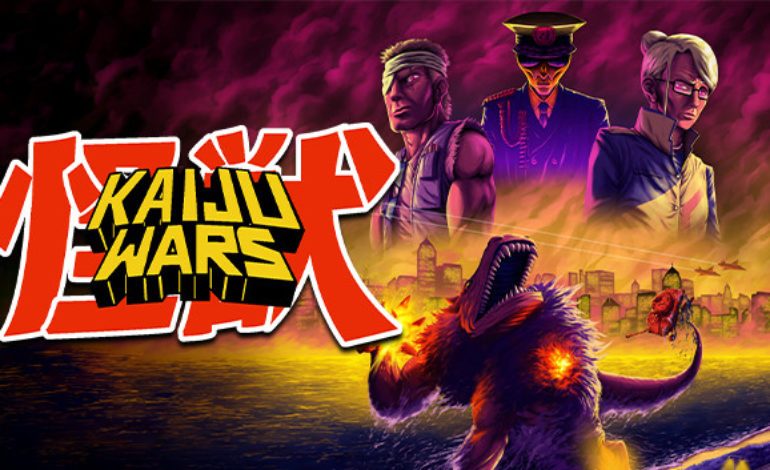

Whenever you hear of either tactic or strategy games, I’m willing to bet that you immediately think of the Civilization series, XCOM 2, Warhammer 40,000 series, and much more. I find that new indie turn-based tactic or strategy games have a hard time standing out in the market due to the sheer popularity of other series. Being unique and original is one of the many key elements needed in order for an inide turn-based game to rise up in fame, that’s exactly what Into the Breach did with its futuristic setting, troops and a really well-written campaign. While I’d say that most of you will probably have not heard of Kaiju Wars, Kaiju Wars modernizes its influences with excellence. It provides an accessible strategy experience with a 6-act campaign, a custom scenario creator, weekly missions, and differentiates itself by bringing its own style and mechanics to the tactical table and is a competitor to other well-known turn-based games.
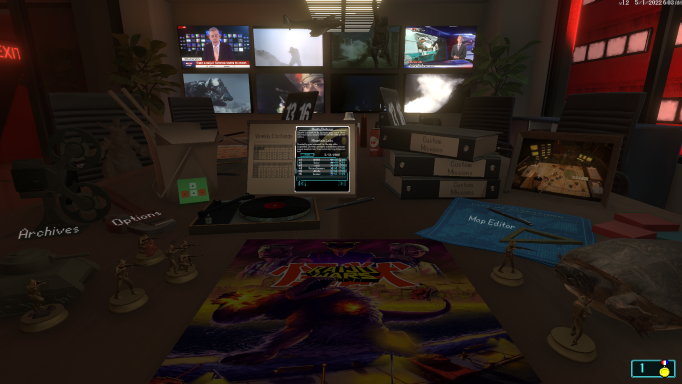

Kaiju Wars puts players in a futuristic post-apocalyptic dystopian nation, Floatio, drenched in neon with the struggle to fend off Kaiju and you are the newly-elected mayor of Floatio, but also a military coordinator tasked with holding off the overwhelming strength of a kaiju attack. Taking up command of the armed forces, it’s up to you to ward off the giant monsters that besiege.
Unlike other tactic games, Kaiju Wars focuses your attention on only one or two monsters instead of waves or hoards of enemies. Rarely is your goal to take out the Kaiju; even after depleting their health, they’ll take a “nap” and often return to the fight after a few turns. Rather, your main goal is to protect a researcher until they attain a set amount of science points and create an anti-kaiju serum. You’ll quickly learn that your priority strategy is slowing down the Kaiju as much as possible. As a result, the game is always pushing you to think many moves in advance.


90% of the game takes place in its campaign mode which takes players all over the world to fend off five different types of Kaiju, each with different personalities and different mutations/evolutions. The campaign really shines thanks to its mission design and level design, each level is perfectly made with its according act. Each mission allows new ways to challenge the player that can be tackled in either Normal or Hard difficulty.
During every mission, players have to use money each round to build different types of bases, which can then be used to build units like tanks, planes, etc. Each unit has a unique role on the battlefield, and players can only have a certain number of them up and running at a time in each mission. Once you start getting your forces assembled, a Kaiju will attack, forcing you to use them in the best way possible to save as many buildings as you can while you fight off the giant creature
The campaign also does an excellent job of sprinkling in new units and mechanics throughout the campaign to keep players on their toes. Eventually, players will have access to researchable units that are more time-exhaustive to produce but have more powerful abilities like mechs or a freeze ray. There is also a deck that players gain access to and can grow over time that allows them to play powerful effects that can radically change the momentum of a level if used correctly.
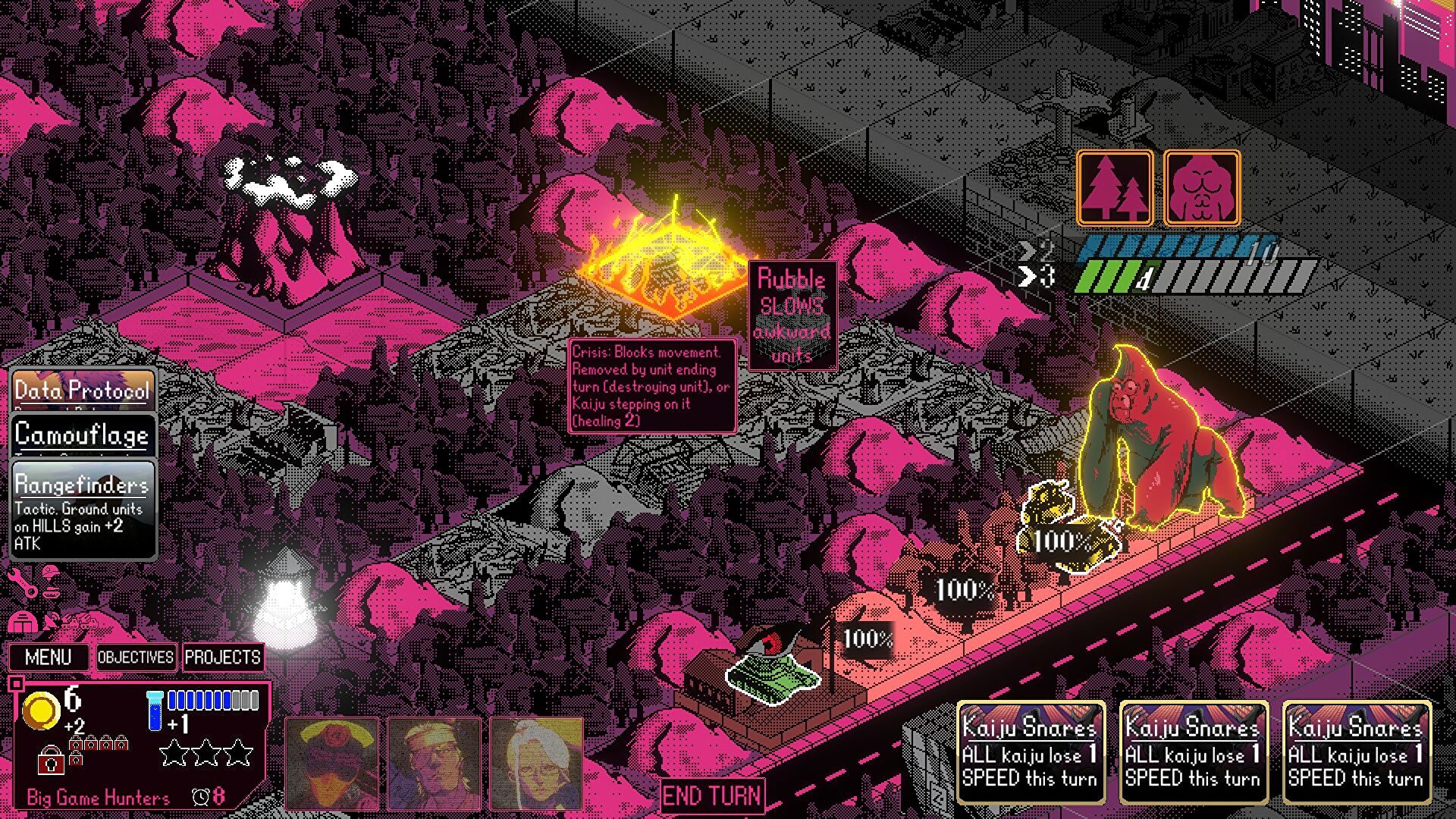

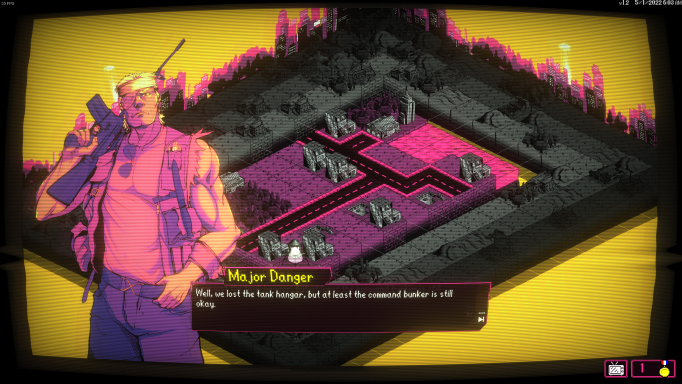

Kaiju Wars’ gem is for sure the overall presentation. The art direction is like your love letter but to Super Nintendo games instead. The buildings, units, tiles, and the kaiju themselves all look crisp and retro, further driven home by the audio and sound effects. Bit-starved line art meets anime retrowave mix, complimented by what sounds like a rousing JRPG soundtrack played through a cassette tape left to warp in a bath of New Coke for a few decades.
The menu room is lit by the fuzzy glow of CRT news reports and links to public domain Kaiju classics, and a host of custom animations bring every wince-worthy fist pummelling to life. you can interact with the security screens, dossiers, and files on your desk, or various other exciting knickknacks to select menu options. There are also several pointless little animations that serve no purpose other than being a bit of a giggle like something from Humongous Entertainment adventure games. It’s a nice little bit of extra detail that helps the game to stand out a fair amount.
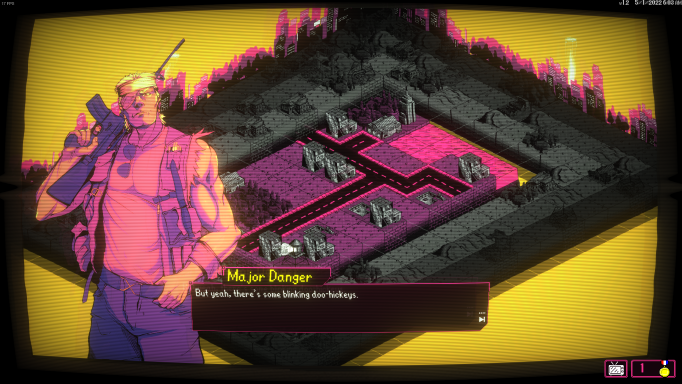

I believe that a game is only as good as its writing and story. Those turn out to be the worst aspect for Kaiju Wars. While it’s far from explaining most of the things actually going on in the game, it tries to revitalize hammy conversations and jokes from old action films throughout. All the dialogues love to overstay their welcome and always go on for far too long at the beginning and ends of missions without justifying its time or its purpose.
Generally, Kaiju Wars does carry some feeling of similarity from other games of its genre, but it does have what it take to stand apart. With good pacing, tactical play, and pop-culture moments, there’s plenty of fun to be had with the main campaign. While the difficulty spike is a little unforgiving, it’s rare to see a game that manages to pull off decent strategic gameplay, give it a unique twist involving predictable pathing, and yet make it look as stylish as anything else you’ll find on Steam. I enjoyed my time playing the game and made me more appreciative of this genre.
Score: 7 out of 10
Reviewed on PC
Play games, take surveys and take advantage of special offers to help support mxdwn.
Every dollar helps keep the content you love coming every single day.
